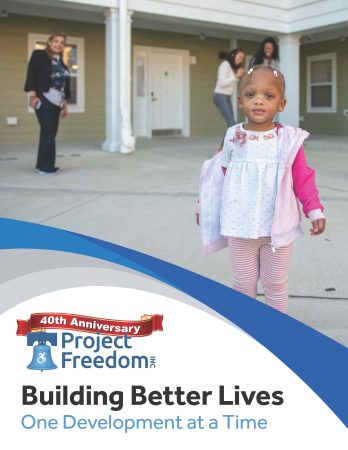Three FAQs by Towns Wanting to Partner with Project Freedom
1. Why should a town partner with Project Freedom to build affordable housing?
Project Freedom Inc. is a non-profit housing developer with a proven track record of building quality housing communities that have long lasting appeal. We use Energy-Efficient products and environmentally friendly materials, which are good for the environment and provide long-lasting sustainability. All our units are accessible, and barrier-free which means that anyone, including someone who uses a wheelchair, can live and move freely within our apartments. Finally, Project Freedom owns and manages our communities. We are involved for the long term as part of our mission. Unlike many for-profit developers, we do not build and leave once completed, We are truly committed to being full partners with the town when we create our housing.
2. How does Project Freedom finance their projects?
Our main source of financing comes from the Low Income Housing Tax Credit Program (LIHTC), a federal program that awards tax credits to the States based on each state’s population. We also apply for County HOME funds, Federal Home Loan Bank Funds, and welcome any municipal funding that may be available. We welcome using municipal funds from the Affordable Housing Trust Funds to purchase the land or properties we can develop. This Municipal partnership funding also gives our projects additional points on our LIHTC application, improving our chances of winning the tax credit award.
3. What are some of the requirements of a Town that partners with Project Freedom?
By becoming a municipally sponsored project, our housing community works as housing partners with the town’s planners and engineers to design a site in conformance with all the town’s local ordinances. The town truly helps to design our housing with their recommendations ensuring that what is ultimately built conforms with the town’s preferences. Our funding requires that the town grant a PILOT which conforms to state law. Assistance with variances and zoning accommodations always helps in facilitating the approval process. Contributing land is a big plus in getting a project off the ground. The availability of water and sewer are requirements for our multifamily housing. Yet our housing communities are usually between 60 and 90 units, and this is not the usual massive housing numbers sought by for-profit developers.

